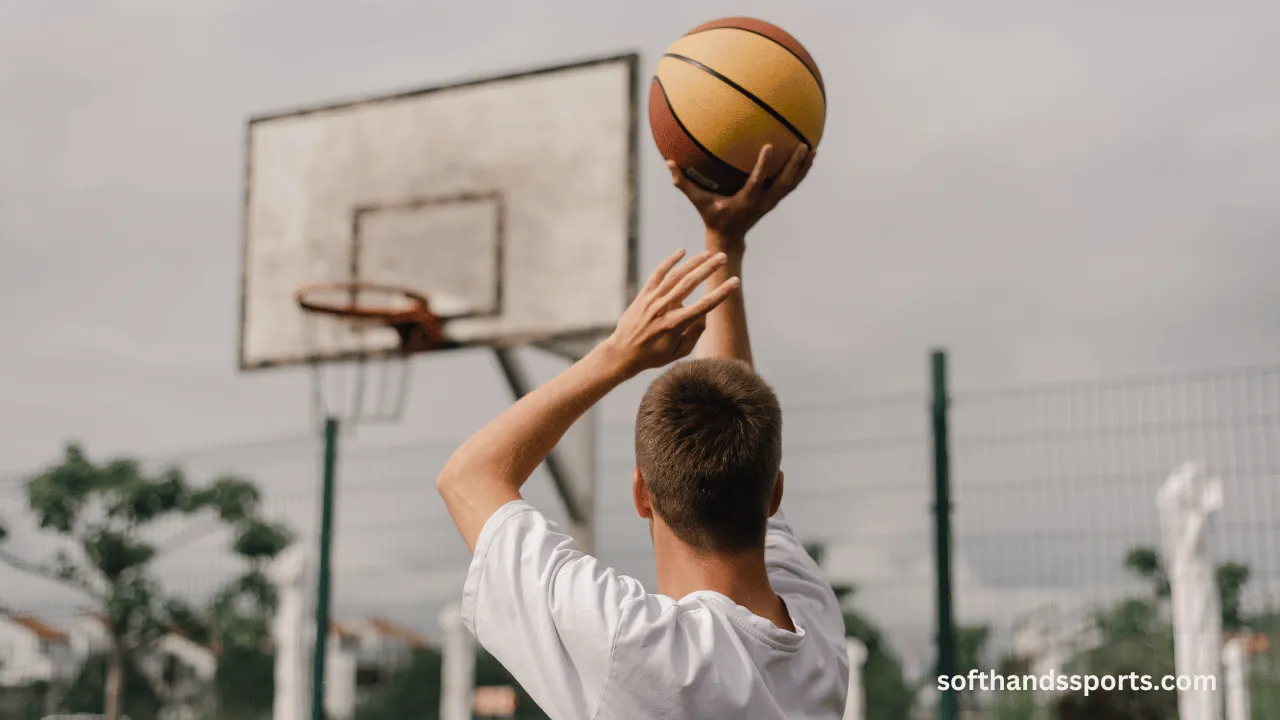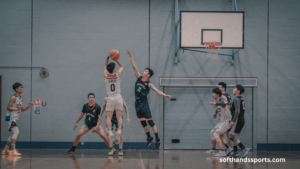Basketball shoes are not just a piece of gear; they are an essential tool for players to perform at their best on the court. The topic of sizing in basketball shoes is one that warrants thorough exploration due to the multifaceted nature of factors at play. Let’s embark on a comprehensive journey into the intricacies of basketball shoe sizing discrepancies.
Contents
- 1 Understanding the Complexity of Sizing Standards
- 2 Factors Influencing the Perception of Fit
- 3 Best Practices for Optimal Sizing Selection
- 4 Addressing Common Concerns and Misconceptions
- 5 Embracing a Holistic Approach to Sizing Selection
- 6 The Quest for the Perfect Fit
- 7 The Epitome of Sizing Mastery
- 8 A Harmonious Union of Fit and Performance
- 9 FAQs
- 9.1 What causes sizing discrepancies in basketball shoes?
- 9.2 How can I ensure the right fit when buying basketball shoes?
- 9.3 Are there specific brands known for consistent sizing in basketball shoes?
- 9.4 What should I do if I receive basketball shoes that do not fit properly?
- 9.5 Do basketball shoe sizing inconsistencies affect performance on the court?
Understanding the Complexity of Sizing Standards
- Brand-to-Brand Variability: One of the most prominent issues contributing to sizing discrepancies is the lack of universal sizing standards across different basketball shoe brands. A size 10 in Nike may fit differently than a size 10 in Adidas, leading to confusion among consumers.
- Global Sizing Differences: The globalization of basketball shoe brands has introduced a new layer of complexity, as sizing standards vary across regions. This means that a size 10 in the US may not align with the equivalent size in European or Asian sizing scales.
- Inconsistent Fit Profiles: Even within the same brand, different shoe models may exhibit variations in fit due to design differences. For example, a high-top shoe may fit differently than a low-top counterpart, adding to the challenge of finding the right size.
Factors Influencing the Perception of Fit
- Individual Foot Characteristics: The unique shape, size, and arch profile of an individual’s foot play a significant role in how a particular size of basketball shoe feels. Factors like width, length, and arch height can impact the perceived fit.
- Materials and Construction: The materials used in a basketball shoe, along with the construction techniques employed, can affect how the shoe conforms to the foot. A shoe with a rigid upper may feel smaller compared to one with a more flexible and forgiving design.
- Sock Liner and Insole Considerations: Some basketball shoes come with built-in sock liners or insoles that may alter the internal volume of the shoe. Players using custom orthotics or additional insoles must account for these factors when selecting the right size.

Best Practices for Optimal Sizing Selection
- Accurate Measurement: Prior to purchasing basketball shoes, it is advisable to get an accurate measurement of both foot length and width. This step is critical in determining the initial size to try.
- In-Store Fitting: Whenever possible, trying on basketball shoes in-store is recommended to assess fit and comfort. Walking, jumping, and performing basketball-specific movements can provide valuable insights into the shoe’s performance on the court.
- Customer Reviews and Feedback: Leveraging online resources such as customer reviews and feedback on specific shoe models can offer valuable guidance on how a particular shoe fits relative to its stated size.
- Consultation with Experts: Shoe store specialists and podiatrists can provide personalized recommendations based on individual foot characteristics, previous injuries, or comfort preferences.
Addressing Common Concerns and Misconceptions
- Breaking-In Period: It is essential to distinguish between a basketball shoe that is genuinely too small and one that requires a break-in period to adapt to the foot’s contours. Understanding this difference can prevent premature judgments on sizing.
- Return Policies and Exchanges: Familiarizing oneself with the return and exchange policies of the retailer can offer peace of mind in case the chosen size does not meet expectations.
Embracing a Holistic Approach to Sizing Selection
In summary, the question of whether basketball shoes run small transcends a simple yes or no answer. A myriad of factors, from brand variability to foot characteristics and global sizing differences, converge to influence the sizing landscape in basketball footwear.
By adopting a patient, informed, and holistic approach to selecting the right size, players can optimize comfort, performance, and injury prevention on the basketball court.
It is through this depth of understanding and proactive sizing practices that players can truly harness the potential of their basketball shoes, ensuring a seamless and supportive experience during gameplay.
The Quest for the Perfect Fit
When it comes to finding the optimal fit in basketball shoes, individuals are encouraged to persistently pursue the elusive perfect fit. The journey begins with understanding one’s unique foot characteristics, including length, width, and arch profile. This awareness lays the foundation for informed decision-making when it comes to selecting the right size.
The next step involves familiarizing oneself with the sizing standards of different brands and specific shoe models. By leveraging customer reviews, feedback, and expert consultations, players can gain valuable insights into how a particular basketball shoe fits relative to its stated size. In-store fitting sessions offer the opportunity to test how the shoe performs during dynamic movements, an invaluable experience to gauge both fit and comfort.
Additionally, it is crucial to consider the return and exchange policies of the retailer, fostering a sense of security in the event that the chosen size does not meet expectations. This proactive approach safeguards against potential disappointments and instills confidence in the selection process.
Players should also acknowledge that certain basketball shoes may require a break-in period, during which the shoe gradually conforms to the contours of the foot. This distinction between a shoe that is genuinely too small and one that necessitates a break-in period is paramount in making accurate judgments on sizing.
The Epitome of Sizing Mastery
As players lace up their basketball shoes, they step into a realm where precision and performance intertwine. The quest for the perfect fit in basketball shoes transcends mere sizing discrepancies; it embodies a pursuit of mastery, where every step taken on the court resonates with purpose and precision.
By delving deep into the nuances of sizing standards, individual foot characteristics, and the art of informed decision-making, players empower themselves to embrace a new level of awareness. This heightened understanding transforms the act of selecting basketball shoes into a deliberate and calculated process, where each detail matters, and each choice shapes the player’s experience on the hardwood.
As players navigate the sea of options, from renowned brands to cutting-edge designs, they do so with a discerning eye and a steadfast resolve to find the perfect fit. With each trial fitting, each consultation with experts, and each consideration of return policies, players reaffirm their commitment to excellence, refusing to settle for anything less than the ideal pairing of comfort and functionality.
The culmination of this journey is not merely a well-fitted pair of basketball shoes; it is a testament to dedication, perseverance, and a relentless pursuit of greatness. The harmonious union of form, function, and fit elevates the player to new heights, enabling them to move with agility, confidence, and unbridled passion on the court.
In the symphony of basketball, where every dribble, pass, and shot is orchestrated with precision, the right pair of basketball shoes becomes more than just equipment—it becomes an extension of the player’s identity, a trusted companion in the pursuit of excellence.
Through the lens of sizing mastery, players transcend the limitations of generic standards and embrace a personalized approach to selecting basketball shoes. With each step, they forge a deeper connection to the game, honing their skills, amplifying their performance, and pushing the boundaries of what is possible on the hardwood.
In the end, the question of whether basketball shoes run small is but a chapter in the larger narrative of athletic prowess and personal dedication. As players continue to evolve, innovate, and redefine their craft, they do so with the unwavering knowledge that their journey towards the perfect fit is not a destination but a perpetual quest for improvement, enlightenment, and the relentless pursuit of greatness.
With each game played, each challenge overcome, and each victory celebrated, players carry forward the lessons learned, the insights gained, and the unwavering spirit of sizing mastery that propels them towards excellence, on and off the court.
A Harmonious Union of Fit and Performance
In essence, the question of whether basketball shoes run small unveils a complex tapestry of elements spanning brand variability, individual foot characteristics, and global sizing differences. By embracing a holistic approach to sizing selection, players can optimize their experience on the court, leveraging comfort, support, and performance to their advantage.
Ultimately, the quest for the perfect fit in basketball shoes epitomizes a harmonious union of form and function, where sizing discrepancies yield to meticulous attention to detail, informed decision-making, and an unwavering commitment to achieving the ideal balance of comfort, support, and performance.
In the ever-evolving landscape of basketball footwear, players stand poised to conquer the court with confidence, knowing that their chosen basketball shoes are not merely a reflection of their style but a seamless extension of their skill, endurance, and unwavering dedication to the game.
FAQs
What causes sizing discrepancies in basketball shoes?
Sizing discrepancies in basketball shoes can be attributed to variations in manufacturing processes, materials used, and design elements unique to each brand.
How can I ensure the right fit when buying basketball shoes?
To ensure the right fit when purchasing basketball shoes, it is recommended to measure your feet accurately, refer to each brand’s sizing chart, consider the type of socks you will be wearing, and if possible, try on the shoes before buying.
Are there specific brands known for consistent sizing in basketball shoes?
While sizing can vary among brands, some brands like Nike, Adidas, and Under Armour are generally known for their consistent sizing across different models.
What should I do if I receive basketball shoes that do not fit properly?
If you receive basketball shoes that do not fit properly, you can consider exchanging them for a different size following the retailer’s return policy or contact the brand’s customer service for assistance.
Do basketball shoe sizing inconsistencies affect performance on the court?
Yes, wearing ill-fitting basketball shoes can affect your performance on the court as it may lead to discomfort, blisters, or even injuries due to lack of proper support and fit.






